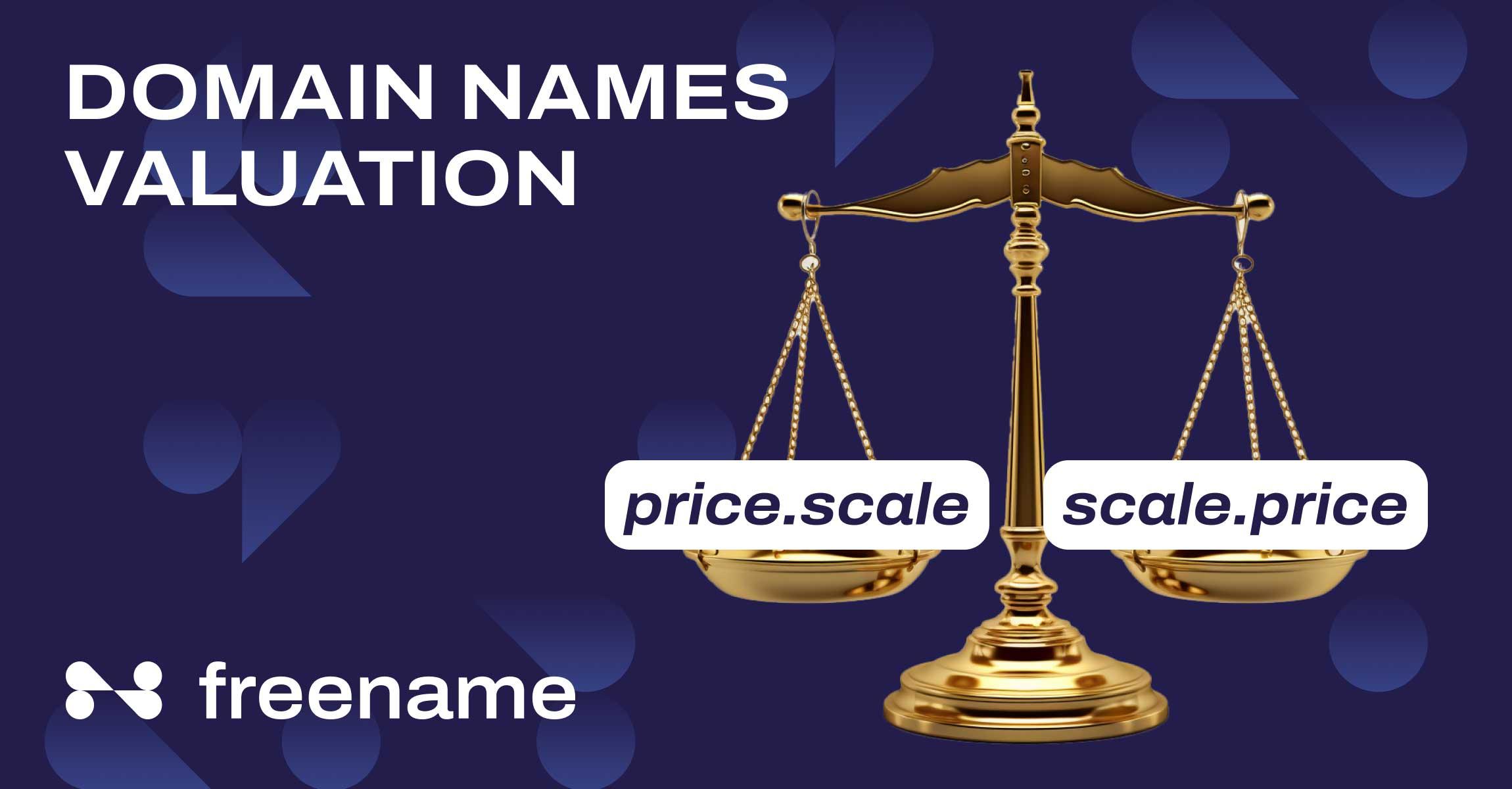Table of Contents
- Understanding the Concept of Domain Flipping and Its Potential Profits
- Essential Strategies for Identifying Valuable Domain Names
- Tips for Successful Domain Valuation and Pricing Techniques
- Navigating the Marketplace: Where to Buy and Sell Domains
- Common Pitfalls in Domain Flipping and How to Avoid Them
- Q&A
- Wrapping Up


Understanding the Concept of Domain Flipping and Its Potential Profits
Domain flipping involves purchasing internet domain names at a lower price with the intent of reselling them for a profit. Investors in this niche, often referred to as domain flippers, capitalize on the growing demand for unique online addresses as businesses strive to establish their digital presence. This practice can be incredibly lucrative if done correctly, but it requires a keen understanding of market trends, branding potential, and effective sales strategies.
Successful domain flipping hinges on several factors that influence a domain’s value. Key aspects to consider include:
- Domain Length: Short, concise names tend to be more desirable.
- Keyword Relevance: Domains containing popular keywords can attract higher bids.
- Brandability: Names that are catchy and easy to remember often fetch a premium.
Potential profits from domain flipping can vary greatly. To illustrate this, consider the following table that highlights different types of domains and their average selling prices:
| Domain Type | Average Purchase Price | Average Selling Price |
|---|---|---|
| Expired Domains | $10 – $100 | $100 - $1,000 |
| Premium Domains | $1,000 – $10,000 | $10,000 – $100,000 |
| Brandable Domains | $100 – $2,000 | $2,000 – $20,000 |
by strategically investing in desirable domains, flippers can unlock significant income potential. The key is not just in buying any domain but rather in selecting those that will appreciate in value over time.
Essential Strategies for Identifying Valuable Domain Names
Identifying valuable domain names is crucial for anyone looking to succeed in domain flipping. Start by conducting thorough keyword research to pinpoint trends and popular phrases within your niche. Utilize tools like Google Trends, Ahrefs, or SEMrush to discover what potential buyers are searching for. Once you have a list of relevant keywords, try to formulate domain names that combine these keywords with elements of creativity, clarity, or branding potential. Remember, the aim is to strike a balance between searchability and memorability.
Another essential strategy is to pay attention to the extension or TLD (Top-Level Domain) of the domain name. Domains with extensions like .com, .org, or .net are often perceived as more credible and are generally in higher demand. When considering alternative extensions (such as .io, .app, or .co), think about the target market and whether that TLD can add value to your domain name. With the right blend of keywords and a solid TLD, your domain can command a premium price.
Analyze existing domain sales to gauge market value effectively. Websites like GoDaddy Auctions or NamePro frequently showcase recent sales, providing insight into what buyers are willing to pay. By studying this market data, you can form reasonable expectations for your domain names and adjust your pricing strategies accordingly. Additionally, consider domain length, simplicity, and brand alignment as these factors significantly influence buyer interest and resale potential.


Tips for Successful Domain Valuation and Pricing Techniques
When it comes to valuing and pricing domains effectively, a keen understanding of market dynamics is essential. One of the fundamental techniques is to conduct thorough research on comparable sales. Explore platforms where domains are bought and sold, and compile data on recent sales of similar domains. Pay attention to factors like domain length, keyword relevance, and extension popularity, as these play crucial roles in value assessment. Consider using websites that specialize in domain appraisal to obtain professional insights, which can serve as a solid foundation for your pricing strategy.
Another important aspect to consider is the domain’s traffic and SEO metrics. A domain that has existing traffic or a strong backlink profile can command a higher price. Utilize tools like Google Analytics and SEMrush to gather data on visitor stats, organic keywords, and search engine rankings. By presenting this data, you can justify your asking price and attract potential buyers who are looking for domains with built-in advantages. Keep a record of key performance indicators in a table format for easier analysis:
| Domain Name | Monthly Traffic | SEO Ranking | Keyword Relevance |
|---|---|---|---|
| example.com | 5,000 | Top 5 | High |
| sampledomain.net | 2,000 | Top 10 | Medium |
| mybusiness.org | 1,500 | Top 20 | High |
Furthermore, don’t underestimate the power of strategic pricing techniques. Utilize a tiered pricing model, which allows for flexibility based on potential buyers’ needs. Set a starting price that reflects the domain’s base value and reserve the option for negotiation. Additionally, consider the psychology of pricing by employing charm pricing (e.g., $999 instead of $1,000) to make your domain more attractive. Leveraging promotional strategies such as limited-time offers can also stimulate urgency among buyers, transforming your domain into a coveted asset.


Navigating the Marketplace: Where to Buy and Sell Domains
When it comes to purchasing and selling domains, the process can be both exhilarating and challenging. Several platforms cater specifically to domain lovers, whether you’re looking to start your journey or expand your portfolio. Some of the most reputable marketplaces include:
- GoDaddy Auctions: One of the largest platforms, it offers a wide variety of domains up for sale and bidding.
- Flippa: This site specializes in buying and selling online businesses, but it’s also a prime destination for domain traders.
- Sedo: A well-established marketplace that features domains from a diverse range of sellers, ideal for those seeking premium domain names.
- Afternic: Partnered with multiple registrars, it allows for fast domain sales, connecting buyers and sellers efficiently.
Understanding how to navigate these platforms is crucial. Each site has unique features, pricing structures, and user bases—making it essential to choose the one that aligns best with your objectives. For instance, GoDaddy Auctions is user-friendly and offers extensive listings, while Flippa provides insightful statistics about character popularity and pricing trends to guide your decision-making.
Moreover, stay informed about the *trends* in domain names and the overarching market shifts that can affect valuations. A simple table can summarize key factors influencing domain prices, including:
| Factor | Description |
|---|---|
| Keyword Popularity | Domains with popular or trending keywords often fetch higher prices. |
| Domain Length | Shorter domains tend to be more valued for their memorability. |
| Extension | Popular extensions like .com typically hold more value and demand. |
| History | Domains with a strong history or traffic can command premium pricing. |


Common Pitfalls in Domain Flipping and How to Avoid Them
Engaging in domain flipping can be a lucrative venture, but several common missteps can undermine your success. One primary mistake is failing to conduct thorough research before making a purchase. Many novice flippers focus solely on the aesthetics of a domain name without considering its keyword potential, search engine ranking, or niche market demand. To sidestep this pitfall, it’s essential to analyze each domain’s keyword relevance, historical value, and existing competition. Utilize tools like Google Trends, SEMrush, or Ahrefs to gather necessary data and insights.
Another frequent obstacle is the overvaluation of domains. Newcomers often believe they can fetch much higher prices than the market supports, primarily due to emotional attachment or hype surrounding popular keywords. This can lead to prolonged holding periods or failure to secure sales altogether. To avoid this, adopt a data-driven approach: examine recently sold domains with similar characteristics and assess their prices. Understanding market trends and buyer motivations is crucial to setting the right asking price for a domain.
neglecting to build a brand or establish an online presence can be detrimental to your flipping efforts. Simply registering and holding domains is not enough; you need to showcase their potential by creating basic landing pages or actively promoting them. This strategy not only demonstrates value to potential buyers but can also improve a domain’s SEO performance. Focus on these areas to enhance your success rate:
- Display a clear value proposition
- Incorporate relevant content and a professional design
- Utilize social media for promotion
Q&A
Q&A: Understanding Domain Flipping
Q1: What is domain flipping? A: Domain flipping is the practice of buying domain names at a low cost and then selling them at a higher price. This process involves identifying valuable or sought-after domain names, acquiring them, and later selling them to individuals or businesses looking to establish a unique online presence.Q2: How does one start domain flipping? A: To start domain flipping, begin with research. Identify trending keywords, niches, and name formats that are popular among businesses. Once you have viable options, register these domain names through a reputable registrar. It’s essential to maintain records of your purchases and track their potential market value.
Q3: What makes a domain name valuable? A: Several factors contribute to a domain name’s value, including its length, relevance, keyword presence, and memorability. Short, catchy names that incorporate common industry terms or geographical locations often attract higher prices. Additionally, the domain’s history and existing traffic can also influence its worth.
Q4: Is domain flipping a profitable venture? A: Yes, domain flipping can be profitable, but it requires strategic insight and market knowledge. While some flippers make significant profits from a single sale, others may encounter difficulties selling their domains. Patience, market research, and effective marketing strategies play critical roles in maximizing profit.
Q5: What are the risks involved in domain flipping? A: Like any investment, domain flipping carries risks. Some domains may not sell, or they might sell for less than purchased. Potential challenges include changes in market trends, competition in desirable domain segments, and legal issues regarding trademark infringement. Conducting thorough research and staying informed can help mitigate these risks.
Q6: Are there ethical considerations in domain flipping? A: Yes, ethical considerations are vital in domain flipping. Avoid purchasing domains with trademarked names or those that could mislead consumers. Engaging in ‘cyber-squatting,’ which involves registering domains specifically to extort money from brand owners, can lead to legal repercussions and damage your reputation in the domain market.
Q7: How can I effectively sell a domain? A: To sell a domain effectively, utilize popular marketplaces like GoDaddy or Sedo, leverage social media, and foster connections within relevant industry communities. Craft compelling listings that highlight the domain’s benefits and potential, and be open to negotiation to attract interested buyers.
Q8: Can I make a living off domain flipping? A: While some individuals have turned domain flipping into a full-time job, success in this field varies based on effort, skill, and market conditions. Factors such as dedication to research, the ability to spot trends, and marketing prowess significantly impact your potential to make a living through domain flipping.
Whether you’re considering a side hustle or diving deep into digital entrepreneurship, understanding domain flipping is crucial. With the right knowledge and strategy, it can become a rewarding venture in the ever-evolving online marketplace.

